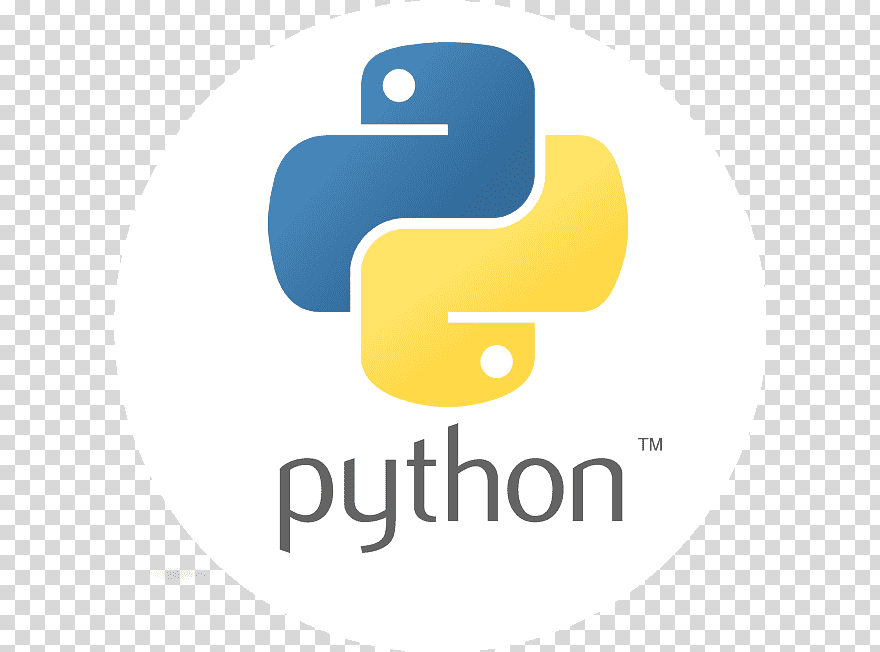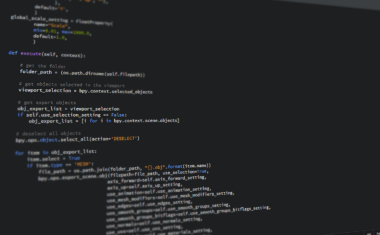The machine world today demands technologies that can transform the way we live, work, and entertain. Considering the demand of smart systems and machines with behavioral algorithms, suggestive searches, and an intelligent system that is capable of learning on its own, John McCarthy has introduced artificial intelligence to the world. Fondly called AI, it has all the capabilities to interpret human likes and dislikes.
These AI applications need some language in the backend that serves as its backbone. Both the languages are high-level, object-oriented and efficient to be used in the development of a wide range of AI-based solutions but differ in many ways. In this blog, we will discuss the two most versatile languages used in building AI-based applications, Java and Python and come across ample points to understand which is better for AI Java or Python.
Although both languages are primarily object-oriented and have gained prominence for application building and other IT operations, they do have some differences that make each unique. It depends on the functionality desired to be given to the end-product for which the specific language is chosen.
Which is Better for AI Java or Python?
Undoubtedly, artificial intelligence has taken technology to another level in different industries. There is no perfect programming language used in AI; different applications require different coding languages for their development. The debate about which programming language to choose between Java and Python is unending but here is a brief of the two:
Python
Python is a high-level programming language used for complex scenarios and a general-purpose language used across various domains. It is the favorite language among developers and data scientists because of its simplicity and less complex syntax. It is open-source and available for all the operating systems and is platform-independent and has an extensive library for Python programming code.
Java
Java is an object-oriented language and also a multi-paradigm just like Python programming language. It is one of the most commonly used languages that came into existence way before Python. It is still ranked among five top languages for AI programming. It has relatively complex syntax than Python, but the speed of execution is quite higher.
Both these languages support neural networks and NLP development solutions. The differences in the functionalities of the languages will be discussed further.
Java vs Python: Four Comparison Points Between the Programming Languages
Although both are highly efficient languages and equally capable of being used for AI projects, these are the following parameters in which Java and Python differ:
1. Speed
Java is faster than Python – Java is a statistically typed and compiled language whereas Python is a dynamically typed and interpreted language which determines the variable data type. Java performs type check during compilation whereas Python performs at the run time which increases the execution time. Hence, the execution time taken by Java is lesser as compared to Python. Thus, Java beats Python in terms of speed.
2. Syntax and Code
Java has more lines of code – You need to first define classes and methods in Java, whereas you can simply start writing the code in Python which increases the lines to be written for coding in Java.
Variable declaration is a must in Java – In Java, it is a must to declare a variable and use a semicolon at the end of each statement while in Python, it is not required.
Indentation is required in Python – An Indentation to indicate what a block of code belongs to is a must in Python. Without it, the programmer will get an error whereas, in Java, it’s not necessary.
3. Ease of learning
Python is more user friendly – When it comes to programming, the codes written in Python are comparatively less complex than Java. One can start his career in programming by learning the Python language.
4. Salary Prospects
Java takes the benchmark – Python has been widely used for AI development projects hence a fresher can expect a handsome amount of salary being a Python programmer but over a period of time when the experience increases, the salary prospects for Java are perceived to be high. Python is in demand in recent years as currently many jobs are shifting their orientation to artificial Intelligence and machine learning due to their rising emergence.
But, if we see the growth possibilities of experienced engineers, Java prevails over a span of the time as it has been in use way before Python became known. Although this trend is expected to change and will Python emerge on top is to be seen.
Now, we have seen the comparison between the two phenomenal programming languages, let’s have a look at the detailed explanation regarding which language is good for AI.
Get To Know Other Data Science Students
Ginny Zhu
Data Science Intern at Novartis
Pizon Shetu
Data Scientist at Whiterock AI
Sunil Ayyappan
Senior Technical Program Manager (AI) at LinkedIn
Is Python Good for AI?
The Python artificial intelligence signifies applications built with a general-purpose and relatively uncomplicated code language that deals with complex applications and a whole lot of data with ease.

Python is known for its flexibility, robustness, platform independence, readable code, community support, and an exhaustive range of frameworks and a useful library making it an easy job for programmers to code for Python AI.
Python AI library
Artificial intelligence is achievable with Python and here is the list of most effective AI-based Python Libraries:
- Tensorflow: Used in writing Machine Learning algorithms, deep learning, and used for heavy computations, including artificial Neural Networks.
- Scikit-Learn: Capable of handling complex data such as clustering, linear and logistic regressions, classification, and others.
- NumPy: Used for the computation of scientific or mathematical data.
- Theano: For computing mathematical expressions with multi-dimensional arrays.
- Keras: Allows fast calculations and prototyping and offers functionalities for computing models, data-sets, visualising graphs, etc.
- NLTK: Preliminarily for Natural Language recognition and Processing, text analysis, and text mining.
- Pandas: For handling large chunks of high-level data structures and analysis.
- Matplotlib: For the creation of visualising objects such as 2D plots, histograms, and charts.
- PyBrain: Used in neural networks and reinforcement learning.
- Caffe: Used for deep learning and processes 60+ million images a day.
- StatsModels: Used for statistical algorithms.
Advantages and Disadvantages of Python
In addition to extensive support libraries to be used during coding, Python offers the following advantages and disadvantages:
| Advantages of Python | Disadvantages of Python |
| 1. Seamless Integration – Python harmoniously integrates with enterprise applications, which makes it feasible to develop web services. This makes it a language to be preferred for developing high-end applications. | 1. Run-time Error – Python is a dynamically typed language and faces many design restrictions, requires more testing time, and shows errors when the application is running. |
| 2. Enhanced Productivity – Python’s strong process integration, unit testing framework, and control capabilities increase the productivity of the developed applications significantly. | 2. Primitive Database Access Layers – Python’s database is still not much developed; that’s why it is not suitable for huge enterprise applications as compared to JDBC and ODBC technologies. |
Is Java good for AI?
This ‘cup of coffee’ is one of the oldest open source languages. It is used for AI as well as machine learning and has a Java Machine Learning Library (JavaML) that provides a collection of machine learning algorithms implemented in Java.
The Java artificial intelligence signifies coding with the help of a long list of libraries that Java provides for Java programming and consequently for Java AI programming that any data scientist can be benefitted from. In the AI landscape, Java is used for machine learning, neural networks, search algorithms, and genetic programming.
Java AI Library
Just like Python, Java also has a set of AI libraries and frameworks useful in AI programming. Here is the list of them:
- Apache Jena: For building synthetic web and data applications from RDF data.
- PowerLoom: Used for creating intelligent, knowledge-based applications and reasoning systems.
- Deeplearning4j: A deep learning JVM library providing API for neural network creation.
- Apache OpenNLP: For the processing of natural language text.
- RapidMiner: Provides machine learning algorithms through GUI and Java API.
- Jenetics: Is an advanced genetic algorithm.
- Watchmaker: This is a framework for implementing genetic algorithms.
- JGAP (Java Genetic Algorithms Package): As the name suggests, it is a component for genetic programming.
- Eva: An Object Oriented Application (OOP) algorithm framework.
- Acceleo: Is an eclipse code generator for creating code from EMF models.
Advantages and Disadvantages of Java
Java is an open-source, cross-platform language with a set of extensive libraries and debugging capabilities. Its advantages and disadvantages are tabulated as below:
| Advantages of Java | Disadvantages of Java |
| 1. Security: Security is integral for a Java design. The Java compiler, interpreter, and runtime environment are secured. | 1. Performance Issues: Java consumes more memory and is slower when compared to compiled languages such as C or C++ hence faces performance issues. |
| 2. Stack Allocation: Java follows a LIFO (Last in First Out) system which helps in storing and retrieving the data easily. | 2. Complex Codes: Java codes are long and complex and are difficult to read and understand. The overly complex codes require one to explain everything in detail. |
| 3. Multithreaded: Using Java’s multithreading capability, a programmer can perform several tasks simultaneously in a program. | |
| 4. Rich APIs: Java offers APIs and a set of commands for database connection, networking, I/O, XML parsing, utilities, and much more. | |
| 5. Rapid Development Tools: The open-source development IDEs used for the coding of Java languages such as Eclipse and Netbeans provide a base for powerful application development with efficient coding and debugging. |
Springboard’s Exclusive Course on AI and Machine Learning
Springboard has a complete AI machine learning career program where we provide ‘deep learning’ in complex concepts related to artificial intelligence and machine learning.
Course highlights:
- Learn about the difference between AI, machine learning, and data science and implementing their algorithms and have hands-on data science tools and libraries.
- Data collection from the APIs and real-time systems and transform it efficiently. Using statistical inference and hypothesis testing to figure data insights.
- Learn the basics of deep learning and build real-world applications using Java and Python frameworks.
- Learn image processing with the libraries and the basics of computer vision and deep learning for images.
- Developing a realistic and large-scale AI application that is available via API or web service on the basis of the knowledge gained.
Along with thorough guidance, Springboard offers 1:1 mentoring, a project-driven approach, career coaching and a job guarantee to land into your dream job.
The world is witnessing AI rising, and it has become the gen-next technology taking over all other technologies. The range of applications AI has given us is enormous. Some of the most used among them are Siri, Alexa, Tesla, Netflix, Pandora, and Nest, to name a few. Every language is unique on its own and comes with its own set of pros and cons. Both the languages Java and Python are equally capable of bringing upon a revolution. But recently Python has gained much prominence due to its edge in AI and ML. But some programmers still prefer Java for programming and building AI applications.
Since you’re here…Are you interested in this career track? Investigate with our free guide to what a data professional actually does. When you’re ready to build a CV that will make hiring managers melt, join our Data Science Bootcamp which will help you land a job or your tuition back!






